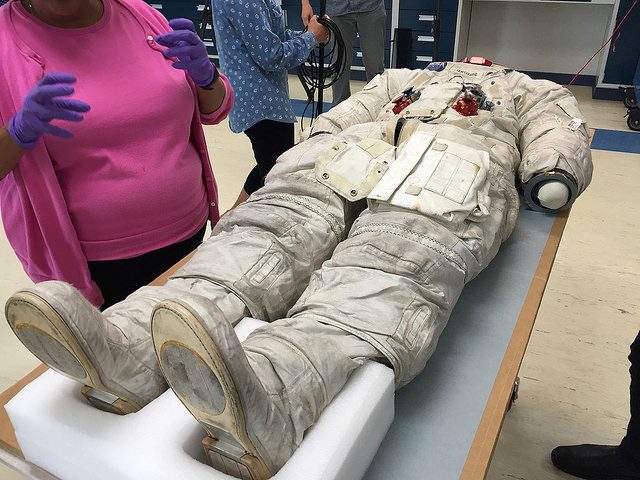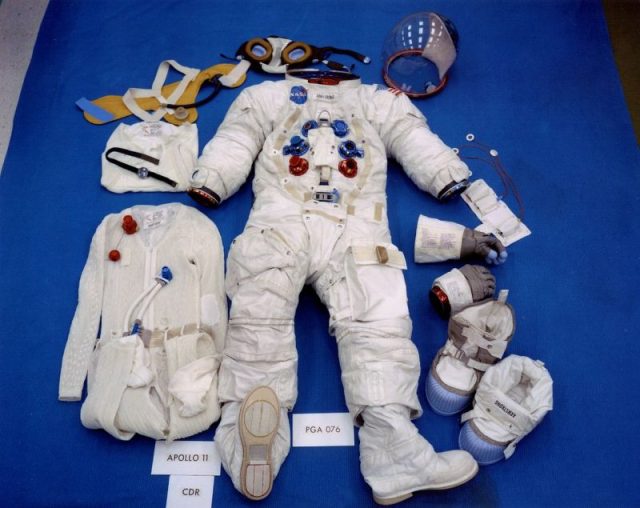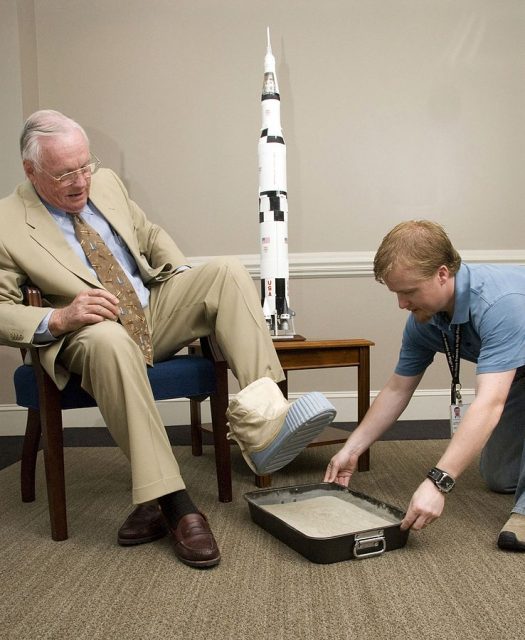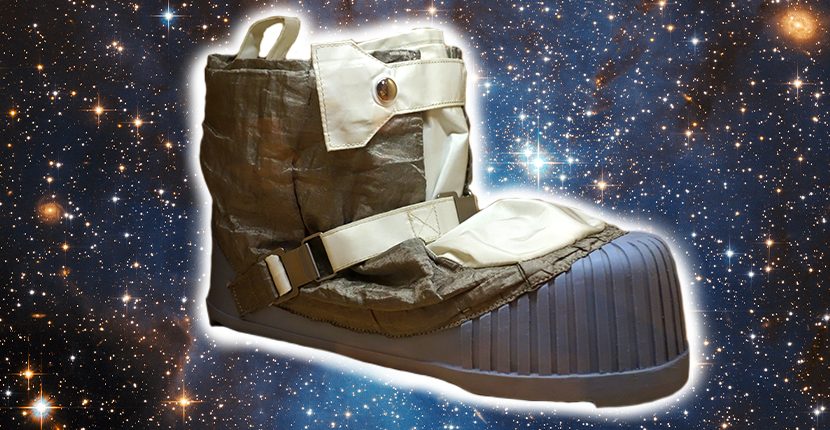One probably wouldn’t wear space boots out in public. They’re not so comfortable for everyday wear, possibly tested in the Arizona deserts, and costs as much as $30,000. That price is certainly fine with NASA in the interest of sending people to the Moon. But for the rest of us…
Space boots must be flawless, embracing the finest of hi-tech features. Their worth is perhaps best explained in the words of National Geographic writer and editor-at-large Cathy Newman, who wittily remarks that “the first man on the moon is myth–it was the first shoe on the moon.”

In her story for National Geographic, Newman reveals more about the boots Neil Armstrong wore on the Apollo 11 mission. He reportedly donned a size 9 1⁄2 pair of boots–and they were left behind on the Moon. Newman explains that the Apollo astronauts had to discard their boots because they collected samples of moon rock, and needed to maintain the balance of their overall weight.
Regarding the current condition of the abandoned space boots, rare examples of human artifacts on the surface of the Moon, according to Newman, the boots should be happily free of rust given the fact the moon is oxygen free. However, any part of the boot made of silicone or any other synthetic fiber is long gone by now. “Should anyone try to retrieve them, there’s a good chance the shoes would turn to powder if touched,” she concludes.

Unraveling the details of the Apollo astronauts footwear gives clear hints that space boots, as much as any other part of the space suit, require top-notch quality if astronauts want to remain resilient to the numerous threats that come with traversing the space.
One such example is the M2 Trekker model, designed by ILC Dover, a company operating from Frederica, Delaware, and hired by NASA to engineer space apparel. “We’re planning for the moon and beyond” were the words of Dave Graziosi from the company, which has a long history of engineering space equipment for NASA. For instance, they were the ones to outfit the Apollo mission astronauts with spacesuits and accessories. Founded in 1947, the company came up with early products such as high-altitude pressure suits and helmets for the U.S. Navy and Air Force.
One of their latest space footwear offerings, the M2 Trekkers are composed of three parts. An outer protective layer shields a middle layer that supports the boot structure, and the third, inner layer, that is set to regulate pressure. Despite the fact that the boot looks enormous, the M2 Trekkers are thinner and not as heavy as the ones used in the 1960s missions.

Spacewear, nevertheless, is no joke. Space boots along with other parts of the suit should assure optimal conditions for the human body, which that is not in its natural environment and cannot survive if not properly isolated. All equipment should provide optimal pressure to the body so that bodily liquids retain their liquidity. Not to mention protection from temperature extremes and other unwanted casualties that might be caused by space debris such as micrometeoroids possibly coming from any direction in the vacuum of space.
In the case of Earth’s faithful satellite, the Moon, gravity is weaker, which means human movements on the surface would differentiate from that on Earth. Hence a proper space boot should allow astronauts to make movements with as much ease as possible.
Whether the M2 Trekker makes the first boot to hit Mars, we are yet to see.
